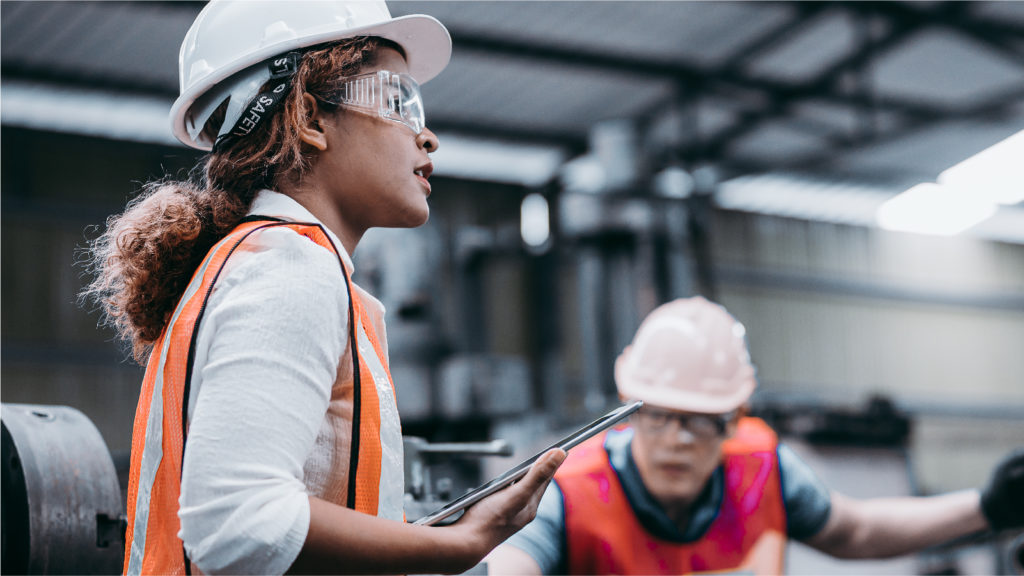Employee experience expert Melissa Arronte shares her top tips on how to improve employee engagement in manufacturing. And, it starts with employee experiences.
The need for quality hires has been on manufacturers’ minds, with the industry committing to spend $26.2 billion pre-pandemic on internal and external training initiatives for new and existing employees in 2020. So, while the manufacturing industry has faced a skilled labor shortage for some time, the COVID-19 pandemic has only increased the gap, making the need only grow stronger in 2021 and beyond.
As manufacturers look to the year ahead and work to fill in the gaps, a renewed opportunity arises. Now is the time to really pay attention to the employee experience and to implement a strategy that can improve employee engagement and retention.
I recently sat down with Melissa Arronte, Ph.D., Solution Principal, Employee Experience at Medallia, on how manufacturing companies can leverage the employee experience to tackle some of the challenges amplified by the pandemic. Below, she shares best practices on how to set up a winning strategy.
Because of COVID-19, manufacturers have more employees working from home while many employees are still required to be onsite. How can leadership deliver great experiences for both? What are you seeing as best practices to foster communication between the two?
It doesn’t just have to be sending out a survey to them on a regular basis. Employees want to contribute, and more organizations are tapping into their wisdom by asking them to provide ideas and suggestions on a regular basis. We are seeing great companies create an “always-on” digital employee survey where employees go often.
What we’re seeing right now is there’s so much communication coming to employees, which employees are appreciative of — hearing updates about reopening and safety procedures — but what they’re missing is the ability for employees to respond back. They don’t get to say, “Oh, that’s a good idea, but we can do this also.” Employees often have deeper insight into customer and process issues. They are frequently able to provide creative, practical solutions.

Why are we seeing more companies look for continuous feedback instead of relying on a yearly survey? What value does it bring?
There was a lot of hesitation before COVID. Organizations may have held quarterly or monthly surveys, but the pervasive attitude toward engaging more regularly was to hold back. The thought was, “Well, we’ve got the engagement survey. Can we really bother employees again?” COVID changed that completely. Leaders realized the impact that the sweeping changes were having on their teams, as employees are often hit first and hardest by them. They also started to recognize the business value of staying connected to employees. Employees can be early indicators or have early ideas of what’s coming and what’s going to affect your customers, your product, or your manufacturing line. It’s important to get not only feedback from them, but also ideas and suggestions — that’s why the employees are here. They want to make a difference. Plus, many are hearing directly from customers about the changes being implemented. Companies that tap into employee insights have a major advantage over those who ignore it.
How about other industries that are doing this well? What can the manufacturing industry learn from them?
The companies that are doing this well create an environment that people can contribute and give their ideas on an ongoing basis. And, they think about all the moments. For instance, Hilton spends a lot of time on the customer side and trying to figure out what’s the best experience for a customer and then has a quick response. Hilton is constantly thinking about what actions they can take to make the employee experience better and increase engagement. It’s not surprising that Hilton was ranked #1 in 2019 and 2020 by Fortune’s annual “100 Best Companies to Work For.”
Employees spend more time at work with co-workers than they do at home with their families. It’s important to them to feel connected and valued. The ability for employees to help improve inefficient processes and highlight opportunities for improvement enhances the time they spend with the company. You want them to highlight processes that are inefficient. You want them to say, “The manual says it should take 15 minutes, but it really takes 30 because of X, Y or Z.” It makes the employee feel great about their contribution and the company operates better. Smart companies doing this give frontline employees the opportunity to share that feedback, whether by crowdsourcing or other methods like video or voice options. It’s a great way to engage. If employees don’t have a method to give feedback, they will typically spend unproductive time complaining to each other. And then the company has no idea what they think. A huge caveat is that the company must make sure that when feedback is received, the employees feel safe and trust that the feedback will not be used in a punitive way. If that happens, feedback stops immediately.
Video can be a great feedback tool when talking about two-way communication. When the COVID-19 pandemic was in its early stages, Marriott released a video of its CEO directly addressing employees. It was honest, direct and authentic. Employees want to see the top leaders; that’s why video is so powerful. It connects with the head and the heart. It stirs emotions much better than a cold email. But, the piece that’s often missed is giving the employees the ability to respond back. Two-way communication is key, because employees want this level of communication.
Sometimes companies spend so much time on the brand for customers but don’t think about the employee brand.
A lot of companies focus on the customer experience and that helps to build their brand. How does that influence the employee experience?
Declaring the importance of designing and delivering great customer experiences can breed high expectations on the employee side. Your employee brand is equally important. Sometimes companies spend so much time on the brand for customers but don’t think about the employee brand, or they think about it in isolation.
For instance, think about a luxury goods manufacturer that is known to have an excellent warranty. The manufacturer’s customer-facing brand is underpinned by trust, to get equal or outsized value for an investment or trust to do the right thing. Your potential employees also think the same values will translate to the employee side.
What if the two don’t match? It disappoints a new hire when they come onboard and the employee experience doesn’t align to the brand promise. New hire turnover is most always due to missed expectations. Companies have teams to focus on saving customers, but don’t think the same way for employees. We don’t try to reach out and save them or recognize that an experience was broken or stressful.
Maybe organizations can provide near real-time support. For example, automated email surveys sent as a result of an action — such as a manager termination — can give employees an opportunity to reach out and be heard. This can work wonders for employee engagement and retention.
Ready to learn more about how the employee experience in manufacturing can improve loyalty, hiring and retention? Download Medallia’s whitepaper A New Model for Employee Experience: Continuous Response.








